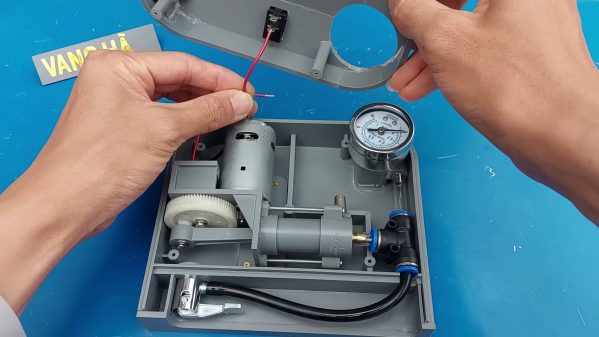If there’s one thing that has come to define the generations after the baby boom, it’s probably nostalgia. It’s heavily marketed and weaponized by the market: yearning for better, simpler times seems to be a core thread of the consumer economy these days. [Makerneer] combined his xilennial love of LEGO bricks with the flat tires on his log splitter to produce a 10″ TPU tyre will never go flat, and provide a dopamine release every time he sees it.
The tyre is a custom model to fit his particular rims, but he does provide STEP and F3D files if you’d like to try modifing it for your own purpose — they’re at Step 6 of the Instructable. Props to [Makerneer] for truly open-sourcing the design instead of just tossing STL files online. His build log also takes the time to point out the ways he had to modify the LEGO tyre profile to make it amenable to 3D printing: notably chamfering some of the tread pattern to eliminate bridging, which is a bit of a no-no with TPU.
As you can see in the (unfortunately vertical) demo video below, it’s a bit quite a bit squishier than a regular run-flat tyre, but that was part of [Makerneer]’s design goal. He didn’t like how rigid the non-pneumatic tyres he’d tried were, so endevoured to design something himself; the whole LEGO thing was just for fun. If you wanted to replicate this tyre with a bit less skoosh, you need only tune the infill on your print.
While only time will tell how long this LEGO-inspired add-on will continue adding whimsy to [Makerneer]’s log-splitting, we have tests to show it will outperform any other plastic he might have printed. This project is probably more practical than a 3D printed bicycle tyre, which doesn’t even have the side benefit of whimsy. Continue reading “10″ LEGO Tyre Is Practical Nostalgia”



















